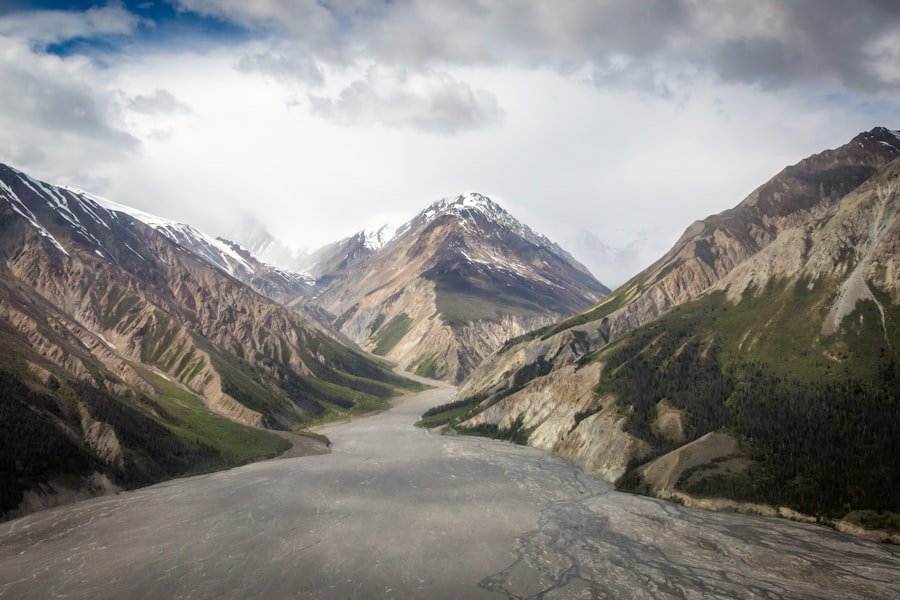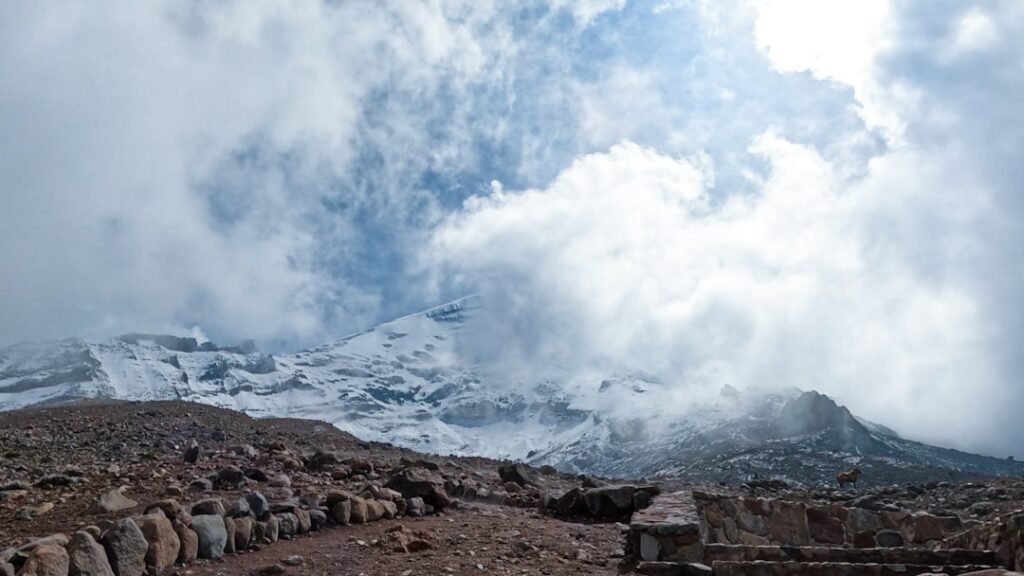Svalbard, located in the Arctic Ocean, is an archipelago that belongs to Norway. It is situated halfway between mainland Norway and the North Pole. Svalbard is known for its unique geography, extreme climate, and diverse wildlife. Despite its remote location, Svalbard plays a crucial role in the study of the Arctic environment and climate change.
摘要
- 挪威斯瓦尔巴特位于北极圈内,气候寒冷干燥,冬季极夜,夏季极昼。
- 北极熊和其他极地动物在此地栖息,需要保护生态环境。
- 挪威斯瓦尔巴特拥有珍贵的矿产资源,对挪威经济有重要贡献。
- 研究北极环境和气候变化对全球环境和气候变化有重要影响。
- 旅游业是挪威斯瓦尔巴特的重要产业,有许多自然景观和文化景点值得游客探访。
Location and Climate of Svalbard
Svalbard is located in the Arctic Ocean, approximately 650 miles north of mainland Norway. It consists of several islands, with Spitsbergen being the largest and most populated. The archipelago is surrounded by icy waters and is covered in glaciers and snow for most of the year.
The climate in Svalbard is classified as Arctic, characterized by long, cold winters and short, cool summers. The average temperature in winter ranges from -14°C to -20°C (7°F to -4°F), while in summer, it hovers around 5°C to 10°C (41°F to 50°F). The extreme cold and harsh weather conditions make Svalbard a challenging place to live and explore.
Habitat of Polar Bears and Other Arctic Animals
Svalbard is home to a wide variety of wildlife, including polar bears, reindeer, Arctic foxes, walruses, and several species of birds. The most iconic animal found in Svalbard is the polar bear. These magnificent creatures are perfectly adapted to survive in the harsh Arctic environment.
Polar bears primarily inhabit the sea ice surrounding Svalbard. They rely on the ice to hunt for seals, their main source of food. Polar bears are excellent swimmers and can travel long distances in search of prey. They are also known for their ability to withstand extreme cold temperatures.
In addition to polar bears, Svalbard is also home to other notable Arctic animals such as reindeer and Arctic foxes. Reindeer can be found grazing on the tundra, while Arctic foxes roam the icy landscapes in search of food.
Valuable Mineral Resources and Norway’s Economic Interests
Svalbard is rich in mineral resources, including coal, iron ore, and marble. These resources have played a significant role in Norway’s economy for centuries. The mining industry in Svalbard has provided employment opportunities and contributed to the country’s economic growth.
Norway has a vested interest in Svalbard due to its valuable mineral resources. The government has implemented strict regulations to ensure sustainable mining practices and protect the fragile Arctic environment. The revenue generated from mining activities in Svalbard is used to support the local community and fund various infrastructure projects.
Importance of Studying Arctic Environment and Climate Change
The Arctic region, including Svalbard, is of great importance when it comes to studying the environment and climate change. The Arctic is experiencing some of the most rapid changes due to global warming, making it a crucial area for scientific research.
Studying the Arctic environment provides valuable insights into the effects of climate change on ecosystems, wildlife, and human populations. It helps scientists understand the complex interactions between the atmosphere, oceans, ice, and land in the Arctic region.
Svalbard serves as a research hub for scientists from around the world who come to study various aspects of the Arctic environment. Research conducted in Svalbard contributes to our understanding of climate change and helps inform policy decisions aimed at mitigating its impacts.
Development of Tourism Industry and Svalbard’s Tourist Attractions

In recent years, Svalbard has seen a significant increase in tourism. The unique landscapes, wildlife, and extreme climate attract adventurous travelers from all over the world. The tourism industry in Svalbard has grown rapidly, providing economic opportunities for local residents.
Svalbard offers a range of tourist attractions, including glacier hikes, wildlife safaris, and boat trips to see the polar bears. Visitors can also explore abandoned mining towns and learn about the history and culture of the region. The opportunity to witness the Northern Lights is another major draw for tourists visiting Svalbard.
Arctic Science Research Base and International Cooperation Projects
Svalbard is home to several research institutions and serves as a base for international cooperation projects focused on Arctic science. The Norwegian Polar Institute, located in Longyearbyen, conducts research on various aspects of the Arctic environment, including climate change, wildlife populations, and ecosystem dynamics.
International cooperation projects in Svalbard involve scientists from different countries working together to study the Arctic environment. These projects aim to enhance our understanding of the region and promote collaboration among researchers from around the world.
Challenges of Ecological Conservation and Environmental Pollution
Despite its remote location, Svalbard faces several challenges when it comes to ecological conservation and environmental pollution. The fragile Arctic ecosystem is vulnerable to human activities and climate change.
One of the main challenges is the impact of tourism on the environment. Increased tourist activities can disrupt wildlife habitats and contribute to pollution. Efforts are being made to implement sustainable tourism practices and minimize the negative impacts on the environment.
Another challenge is the potential for environmental pollution from mining activities. Strict regulations are in place to ensure responsible mining practices and minimize pollution. However, there is always a risk of accidents or spills that could have detrimental effects on the fragile Arctic ecosystem.
Local Residents’ Life and Cultural Traditions
Svalbard has a small population of approximately 2,500 people, mostly concentrated in Longyearbyen, the largest settlement in the archipelago. The local residents, known as “Svalbardians,” have adapted to the extreme Arctic conditions and have a unique way of life.
Life in Svalbard revolves around nature and outdoor activities. Hunting, fishing, and dog sledding are traditional activities that have been passed down through generations. The Svalbardians have a deep connection to the land and sea, and their cultural traditions reflect their close relationship with the Arctic environment.
History and Exploration Stories of Svalbard
Svalbard has a rich history of exploration and discovery. The archipelago was first discovered by the Vikings in the 12th century, but it wasn’t until the 17th century that it was officially claimed by Norway. Over the years, Svalbard has been a base for whaling, mining, and scientific expeditions.
Explorers such as Roald Amundsen and Fridtjof Nansen used Svalbard as a starting point for their Arctic expeditions. Their stories of bravery and endurance have become legendary, inspiring future generations of explorers.
Northern Lights and Other Natural Wonders Viewing Experience
One of the most spectacular natural wonders in Svalbard is the Northern Lights, also known as the Aurora Borealis. The Arctic region is one of the best places in the world to witness this mesmerizing light display.
The Northern Lights are caused by charged particles from the sun colliding with atoms in the Earth’s atmosphere. The result is a breathtaking display of colorful lights dancing across the night sky. Svalbard offers excellent viewing opportunities due to its location within the Arctic Circle and its clear, dark skies.
In addition to the Northern Lights, Svalbard is also home to other natural wonders such as glaciers, fjords, and ice caves. Exploring these natural wonders provides a unique and unforgettable experience for visitors to Svalbard.
Svalbard is a unique and important place in the world. Its remote location, extreme climate, and diverse wildlife make it an ideal location for studying the Arctic environment and climate change. The archipelago’s valuable mineral resources and economic interests have contributed to its development and growth.
Svalbard’s tourism industry has flourished in recent years, attracting visitors from all over the world. The region’s natural wonders and cultural traditions provide a rich and immersive experience for tourists.
Despite the challenges of ecological conservation and environmental pollution, Svalbard continues to be a hub for scientific research and international cooperation projects. The local residents’ way of life and cultural traditions reflect their deep connection to the Arctic environment.
In conclusion, Svalbard’s significance in terms of geography, climate, wildlife, and research cannot be overstated. It is a place of immense beauty and importance, offering a glimpse into the wonders of the Arctic.
请点击这里阅读一篇与挪威斯瓦尔巴特相关的文章。

